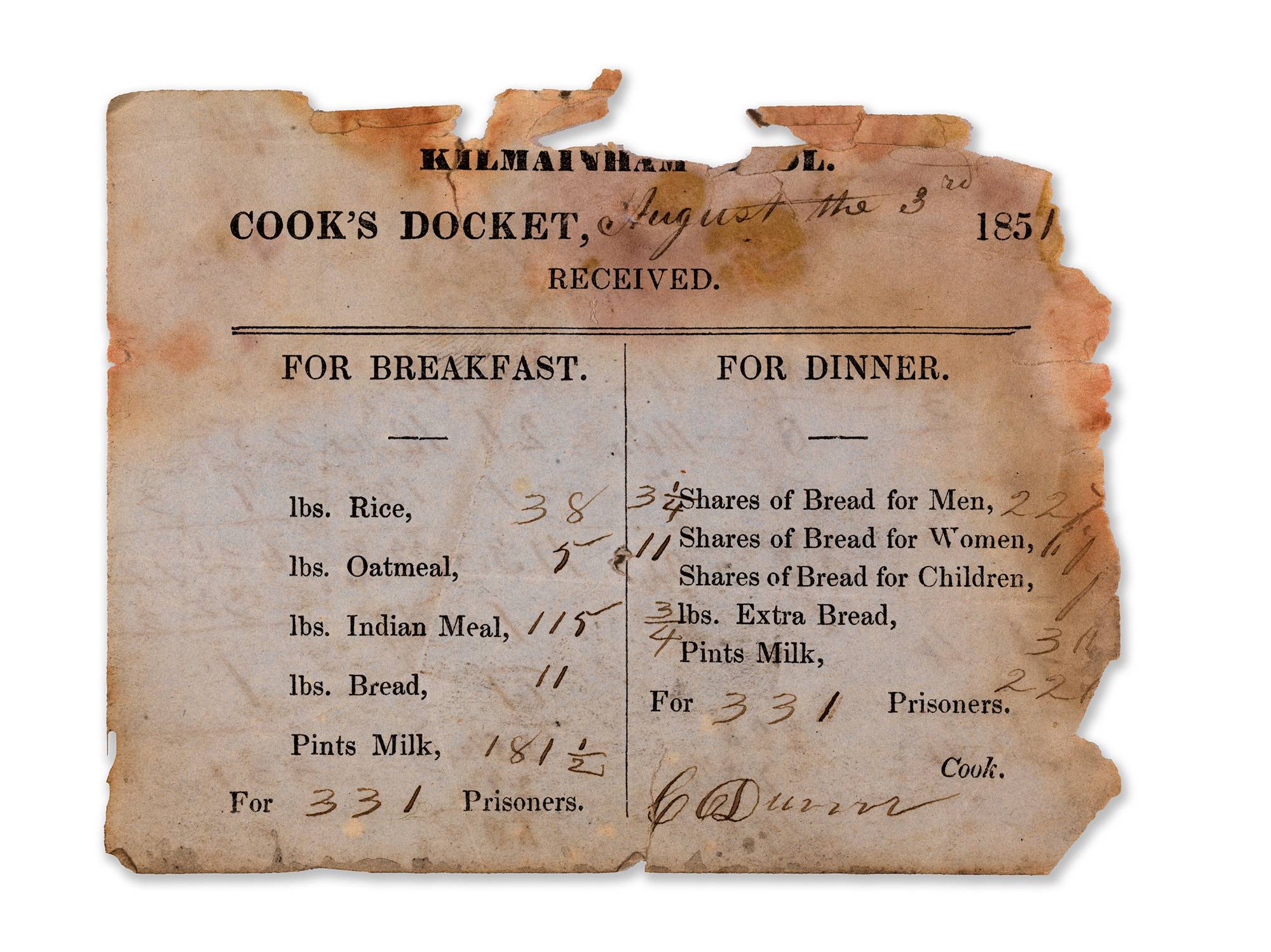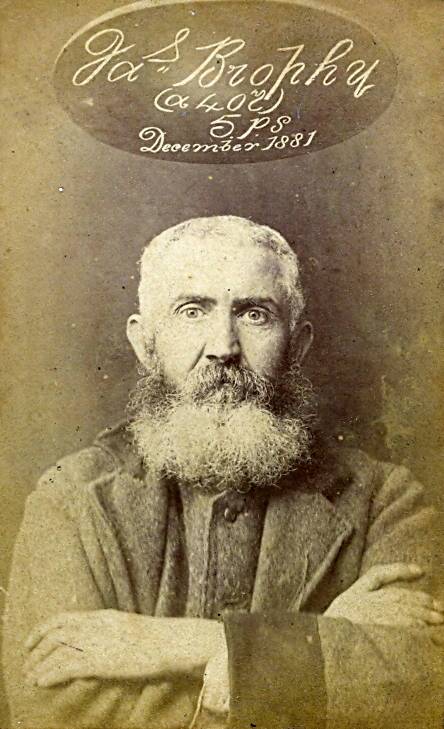Prison Life
Although the New Gaol at Kilmainham was built as a response to the poor conditions of prisons in the eighteenth century, it was soon visited by the same problems which had visited the old gaol, mainly as a result of overcrowding. Through most of the nineteenth century, up until the 1860s at least, overcrowding led to disease, poor health and hygiene, and no full separation of adult and child (or male and female) convicts.
Overcrowding was caused by the use of the Gaol as a holding depot for convicts sentenced to transportation to Australia, by the onset of the Great Famine (and the massive increase in offences relating to the theft of food), and by the incarceration of those with mental illnesses as criminals. Insufficient accommodation meant that for this long period, cells which had been designed for one person, at one point held as many as five at a time. The Vagrancy (Ireland) Act of 1847, which compelled the arrest of beggars, worsened conditions further.
Numbers of these wretched creatures are obliged to lie on straw in the passages and dayrooms of the prison without a possibility of washing or exchanging their own filthy rags for proper apparel… Upon the necessity of passing this Act, it is not our place to pass an opinion, but of its effect upon the condition of the gaols we are painfully conscious. The committing of vagrants led to the introduction of fever and dysentery into a crowded prison and the sacrifice of many lives.
Food rations per prisoner were very low during the Famine years. They were decreased further when it became apparent that people were committing crimes purely to gain entry to the Gaol, and for the chance to avail of regular food. Once a staple, potatoes disappeared from the prison diet, as they did from everywhere else in Ireland. They were replaced by bread and meal, and would not be reintroduced until 1855. Different measures of food were allocated to men, women, and children. A typical daily diet for a male prisoner in the mid-nineteenth century consisted of Indian meal (corn) and milk for breakfast, and bread and milk or gruel (or soup) for dinner.
Inmates were separated for exercise. The transportation yard contained two circles for walking. One was shared by those condemned to execution with those condemned to transportation. The other was used by those whose sentences were temporary. Women exercised in a smaller yard nearby. The children’s small exercise yard was also close by, but separate. All inmates were allocated one hour of outdoors activity per day.
Prisoners also worked within the Gaol. A sentence of hard labour for a man consisted of manually breaking stones in the Stonebreakers’ Yard, and for women meant working in the laundry. After 1844, inmates also made and repaired their own prison uniforms. Other work involved cleaning the cells and common areas, providing care (of a sort) to the ‘lunatics’. Children whose sentences were longer than two weeks received weekly school lessons from the chaplain.
Throughout the history of the Gaol, the vast majority of its population were ordinary criminals rather than political prisoners. When the Gaol first opened, half of all prisoners were debtors. The other crimes were divided between robbery, assault, rape, murder, bigamy, illicit distilling, and counterfeiting coins. Those who were found to be mentally disabled were also jailed, as were beggars. Food-related theft rose dramatically during the famine years. The offences involved in most cases were very minor; the debt owed by so many early convicts generally consisted of a tiny amount of money.
Conditions for women remained persistently worse than those for men. If a woman was the mother of a baby under twelve months old, the baby often came with her and stayed for the duration of her sentence. After the bright and airy new East Wing was built in 1861, men were transferred there, while women remained in the darker, older West Wing. Conditions were also different depending on the status of the prisoner. While poorer inmates were fully subject to the Gaol system, rich and prominent prisoners such as Charles Stewart Parnell could comfortably furnish a number of cells with their own possessions, and interact freely with visitors.
The details of those who were incarcerated in Kilmainham Gaol are contained in twenty-four large volumes. These are now located in the National Archives of Ireland.


